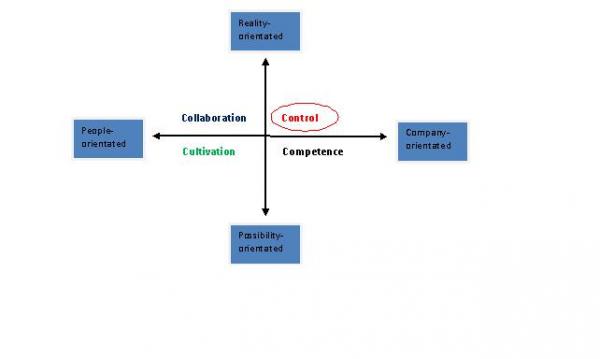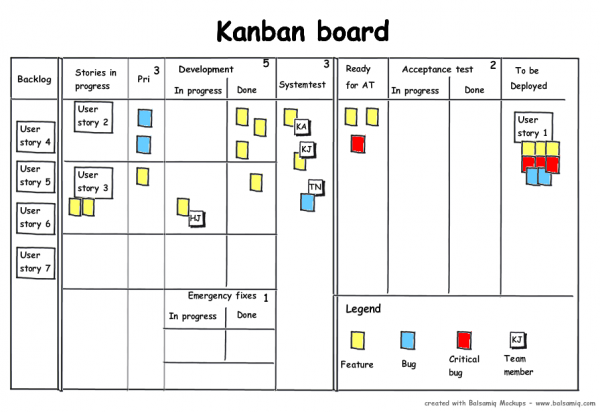Change management is primarily dealing with people, their emotions, and their fear of change. A saying exists that states that peoples’ emotions are like elephants. Many use the metaphor of “on top of the elephant” as a means for comparing peoples’ rational self – the “on top” and the elephant being “their emotional self”. It is also a fact that people despise change – especially those who have been accustomed to doing their job in a certain manner for several years. They become emotional and uncooperative when confronted with abrupt change.
As if emotions and fear of change were not enough, there are cultural aspects that have to be taken into account before choosing the appropriate techniques and tools for making progress. Special care must be taken to properly choose techniques and tools that suit the people, their emotions, perceptions of change, and all of this must be done in the context of corporate culture.
A good way of understanding corporate culture is through the Schneider model (1) which outlines four distinct types of cultures and offers a pragmatic approach for managing given each instance. The Schneider model defines culture as “how we do things around here to succeed”. The cultures outlined are the following:
1. The collaboration culture is about working together
2. The control culture which is about getting and keeping control
3. The competence culture is about being the very best
4. The cultivation culture which is about learning and growing with a sense of purpose
The model can be visually interpreted via the following four quadrants with the horizontal axis spanning from people orientated to company orientated and the vertical axis spanning from reality orientated to possibility orientated.

Through this model, I was able to determine that Agile is only suited as a framework when the company culture is based on collaboration or cultivation. Agile is well understood and easily adopted by “.com’s” and organizations where the CEO or founder is an entrepreneur or there is a tendency towards collaboration, synergy, purpose, and dedication. On the other hand, when the culture is command-control or process-orientated (control on the visual model above), Agile is not well suited as a change management technique. If it is used as the principal technique, cultural change is likely to be very painful. In these situations Lean principles, Kaizen, and Kanban work well. The principal reasons are that Agile is about people and people’s thinking while Lean and Kaizen are about improving processes and optimizing flow. Agile is about changing people and their thinking. Lean and Kaizen are about improving their work environments and thus improving their quality of life at work.
So what are Lean, Kaizen, and Kanban?
Lean
Lean has its basis around the fourteen points taught by Dr Edwards Deming to the Japanese following World War II. The Japanese were so successful following his 14 points for management that in a mere four years they had rebuilt their county and in forty years became the 2nd largest economy in the world. Today, Dr Deming’ points are followed at organizations such as Toyota, Ford, Porsche, and Dell among many others worldwide.
Dr Deming taught the Japanese the following fourteen points in the 1950s which hold true today: (2)
- Create constancy of purpose toward improvement of product and service, with the aim to become competitive, stay in business and to provide jobs.
- Adopt the new philosophy. We are in a new economic age. Western management must awaken to the challenge, must learn their responsibilities, and take on leadership for change.
- Cease dependence on inspection to achieve quality. Eliminate the need for massive inspection by building quality into the product in the first place.
- End the practice of awarding business on the basis of a price tag. Instead, minimize total cost. Move towards a single supplier for any one item, on a long-term relationship of loyalty and trust.
- Improve constantly and forever the system of production and service, to improve quality and productivity, and thus constantly decrease costs.
- Institute training on the job.
- Institute leadership. The aim of leadership in management should be to help people and machines and gadgets do a better job. Supervision of management is in need of an overhaul, as well as supervision of production workers.
- Drive out fear, so that everyone may work effectively for the company.
- Break down barriers between departments. People in research, design, sales, and production must work as a team, in order to foresee problems of production and usage that may be encountered with the product or service.
- Eliminate slogans, exhortations, and targets for the workforce asking for zero defects and new levels of productivity. Such exhortations only create adversarial relationships, as the bulk of the causes of low quality and low productivity belong to the system and thus lie beyond the power of the workforce.
- a) Eliminate work standards (quotas) on the factory floor. Substitute with leadership.
b) Eliminate management by objective. Eliminate management by numbers and numerical goals. Instead, substitute with leadership. - a) Remove barriers that rob the hourly worker of his right to pride of workmanship. The responsibility of supervisors must be changed from sheer numbers to quality.
b) Remove barriers that rob people in management and engineering of their right to pride of workmanship. This means, inter alia, the abolishment of the annual or merit rating and of management by objective - Institute a vigorous program of education and self-improvement.
- Put everybody in the company to work to accomplish the transformation. The transformation is everybody’s job. “Massive training is required to instil the courage to break with tradition. Every activity and every job is a part of the process.”
The heart of Lean is Kaizen which means “continuous improvement” (CI) in Japanese. The objective of CI is to improve the flow in the workstream or improve the ability to deliver value in a more effective and efficient manner. Continuous improvement is attained by following the below five-step process:
- Identifying value by clearly defining the customers and how they attain value
- Mapping the value stream – the “as is” scenario and the “can be” scenario after having identified the various wastes
- Creating a flow for the value stream
- Establishing a pull system that is based on customer demand
- Working towards a value stream that is continuously more effective and efficient
Kanban
Kanban is a Lean tool that enables Lean and Agile implementations through a visible project management solution. The term, Kanban, means visual sign in Japanese and has been used in Japan since the 1950s as a medium for optimizing productivity and delivering value at companies such as Toyota. With regards to this tool’s application in software development, it has been David J. Anderson (3) who has been the principal thought leader along with other leaders that actively participate through the Lean Software & Systems Consortium. (4)
The idea of the Kanban method is to gradually improve an existing way of working – whether it is software development or project management. It does so by following these five principles:
1. Making the workflow and its steps visible
2. Limiting the amount of work and focusing on a pull mechanism vs. the traditional push environments
3. Managing the flow of work by removing waste
4. Making process policies explicit
5. Stakeholders being involved in developing ways of working using different models
The Kanban board below illustrates the above principles. (5) As can be seen from the illustration, flow is visible in the forms of columns – Backlog, Stories in Progress, Pri or Prioritized, Development in Progress, etc. Limits are set as “3”, “5”, “3”, and “2” for Prioritized, Development in Progress, System Test, and Acceptance Test. The same limits assist to manage the flow of the work as the team is focused on a limited number of items at a time – both user stories and bugs – to ensure technical debt is managed properly. The process policies are explicit with an “urgency fixes” stream shown apart from the “normal user story streams”.

So what has been the solution?
The solution has been applying Lean methodologies, Kaizen, Kanban, and Agile in context.
A clear understanding of emotions, fear of change, and corporate culture are fundamental. The Schneider model has been invaluable as a means towards understanding the different cultures and guidance towards which methodologies to use. The DISC assessment (6) has been helpful for learning how to work with various personality types throughout the organization. In the case of command-and-control or process organizations, Lean, Kaizen, and Kanban can be applied throughout and are not limited to development teams. Agile may be introduced and taught to development teams and stakeholders in these organizations if these teams are nimble and creative. In other instances, once teams have benefitted from Lean activities, there is a much higher chance of being successful in implementing Agile among development teams. The reason for this statement is that individuals enjoy learning about the history behind Lean and enjoy implementing Kanban boards. The learning experience is enjoyable and practical. The positive results are immediate.
In the select instances where the culture is already collaborative, nimble, and creative, Agile can be introduced and implemented throughout, but I might recommend also teaching Lean principles as they are invaluable.
The key again is implementing tools and techniques in context and conducting regular retrospectives to adjust as needed.
References:
(1) Schneider model from the book: William Schneider, The Reengineering Alternative: A plan for making your current culture work
(2) Deming’s 14 Points: http://en.wikipedia.org/wiki/W._Edwards_Deming
(3) David J. Anderson & Associates: http://www.agilemanagement.net/
(4) Lean Software & Systems Consortium: http://www.leanssc.org/
(5) Kanban board mockup, Ketil Jensen’s blog: http://ketiljensen.wordpress.com/2009/10/31/kanban-the-next-step-in-the-agile-evolution/
(6) DISC Assessment: http://en.wikipedia.org/wiki/DISC_assessment
Free Kanban Minibook Download:
Jesper Boeg’s Kanban Minibook: http://www.infoq.com/minibooks/priming-kanban-jesper-boeg
About the author:
Juan Barberis is a Lean/Kanban and Agile practitioner, coach, and trainer. He enjoys leading teams through their change management journey with focus on optimizing business processes. He is passionate about Lean, Kaizen, and Kanban and is grateful to all the thought leaders that have contributed to his understanding and development over the past 25 years in Japan, the United States of America, Europe, and Australia.
Juan’s LinkedIn profile: http://au.linkedin.com/in/juanbarberisthurdekoos